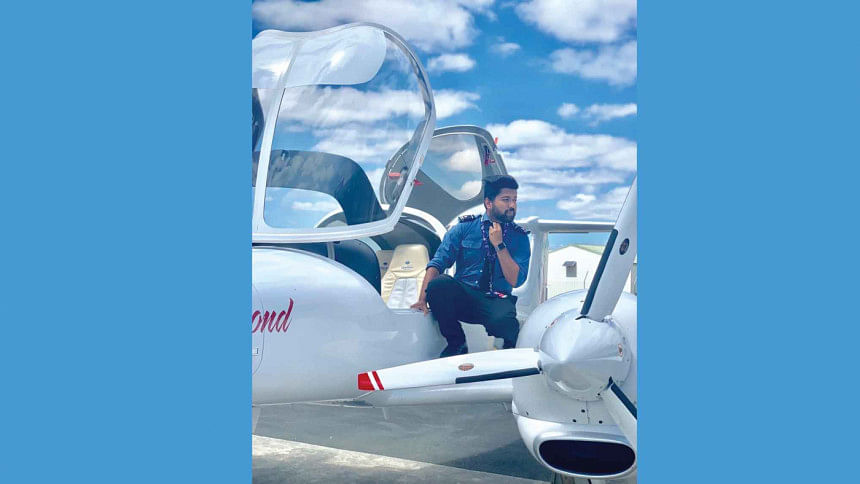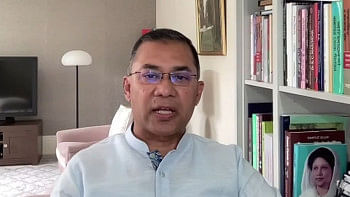Let’s fly: Everything you need to know to become a pilot

Ahmed Sarwar is a 25-year local who has recently graduated as a pilot from New Zealand. We sat down with him to have a bit of chat about how aspiring pilots can prepare themselves for the profession, and the dos and don'ts of the process.
What are the basic requirements (Physical and academic) to qualify for pilot training?
It depends on which country you're training in. In Bangladesh, I discovered the requirements are high for no apparent reason. Schools such as Galaxy and Arirang require you have an academic background in science. Same in Malaysia. But countries like Australia, New Zealand or the United States require that you be of 16-year-old for PPL (Private Pilot Licence) and 18-year-old for CPL (Commercial Pilot Licence). They also require a minimum educational requirement of O Level but no science background. The entire background thing is completely unnecessary as flying is something you have never learned in your life. It's an entirely different game. It's not like you have to be very good at physics or maths to learn flying. You don't need to be good at maths, you just have to be smart about it. You need to be able to make quick calculations in your head. They teach you everything from scratch.
The physical requirements are quite strong. A PPL Pilot holds a class-2 medical and a CPL Pilot requires class-1 medical which is a bit more restricted. This status has to be renewed every year, by a six-hour-long medical test. The eye checkup itself needs almost two hours. If you wear glasses or contacts, that is not something to worry about as long as you see what they want you to see. There are also ear and lungs checkups, calorie counts and many other tests. If you don't qualify in the test, you lose your license right away no matter how many years you have been in the profession.
How can one join a flying school?
It's a bit harder when you go from Bangladesh to New Zealand. When I went to New Zealand in 2017, there was no proper agency to facilitate the visa process, nor were there any facilities of e-visa. I had to send my passports and other documents to India first for the process to start, as India is the closest embassy for Bangladeshis when it comes to the visa procedures for New Zealand. From contacting the flying school that I wanted to attend to the IELTS exams and other paperwork, I had to do everything on my own. Nowadays there are agencies who can handle these procedures directly, and e-visas make the process easier as well.
The easiest way to enrolling yourself to a flying school is to go to the website and send an e-mail to the designated individual. They usually don't take more than 2 days to reply. They are persistent. I exchanged almost 500 emails till I reached New Zealand.
How much does it cost and how long does it take?
This is a critical question because the costs are not rigid in this case like usual academic costs and tuition fees. In this case, it's of a more practical education than a theoretical one, and that has a lot to do with fuel prices, which fluctuates frequently.
The school I went to gave me an estimated cost of 85 thousand New Zealand dollars in the beginning. When they estimate the costs, they expect you to succeed in every manoeuvre in the first try. There are 10 theoretical courses in the CPL training, which they expect you to pass at one go. But what happens is that we can hardly get it done at one try, so we have to repeat several exercises and courses, and that increases the costs and tuition fees. In Bangladesh, the training doesn't include multi-engine or ILS ratings.
When the trained pilots join Bangladesh Biman or local airlines, they are sent or Dubai or Spain to complete the multi-engine training. But when you join Emirates or Qatar, they want you to have every training and they are not going to pay for it. So I took the multi-engine training which cost me 30 thousand New Zealand dollar and the ILS rating training which cost me 10 thousand New Zealand dollars. I took as many pieces of training as I could because I wanted to aim at the international airlines, like Qatar or Singapore Airlines.
In the beginning, it is assumed that the training will be done in a year, but since a lot depends on the weather, that is not the case. Most flight tests are done visually, so if the weather is slightly adverse, the tests have to be cancelled. Took me two years to complete my training. It depends on the trainee, to be honest. One instructor is assigned to four trainees. If you come home on a vacation, when you go back you have to resume from right where you left the training.
What is the most difficult and/or challenging part of pilot training?
Obviously the actual flying because when we start we are completely new at it. Every manoeuvre comes with a new set of challenges because they make you aware of every emergency that can occur. Some tasks like the spiral dive can be a bit daunting, it might scare you for a while or can even get you sick. In terms of physical training, force landing was the toughest task for me, where the instructor shuts the engine off mid-air and you have to land the aircraft safely no matter where you are.
What is the starting salary of a pilot and what do you think are the best airlines to work for now that you're done with your training?
For Bangladesh, the average starting salary for a pilot is around BDT 1.5-2 lacs as far as I know. By the time you become a captain, it's close to BDT 6-6.5 lacs a month.
When you're in Bangladesh, you need a Bangladeshi flying license to get a job here. But when you're in, suppose, the UK, you'll need a license from there or convert your Bangladeshi license to a UK license. As I just completed my training from New Zealand, I have the license from the New Zealand Civil Aviation. So my first target would be to work for an airlines that is based in New Zealand. If I come back to Bangladesh and start working for Biman, I'll have to convert my New Zealand license to a Bangladeshi one.
Considering the devastating effect pandemic had on the aviation industry, do you think the new pilot will have a difficult time getting a job?
Due to the covid situation, it is difficult to say which airlines will be the best option, as none of them is hiring at the moment. But I think this is the right time to start training because, by the time the training ends, the world might restore some level of normalcy and the airlines would start hiring again.

 For all latest news, follow The Daily Star's Google News channel.
For all latest news, follow The Daily Star's Google News channel. 




Comments